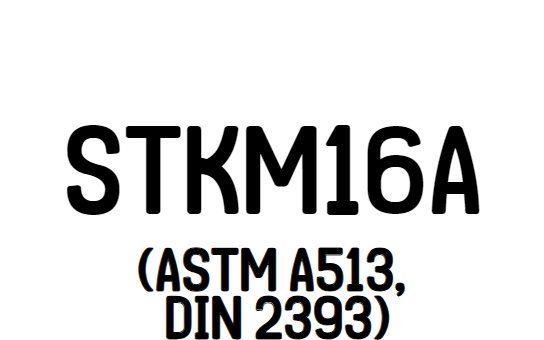-
About
-
Our Brand
-
Products
-
Community
Community
Blog
Blog
STKM16A Characteristics, Mechanical Properties, Advantages, and Applic…
- Writer
- STEELTOPIA
- Date
- 24-09-24
STKM16A Characteristics, Mechanical Properties, Advantages, and Applications
STKM16A is a carbon steel grade widely recognized according to Japanese Industrial Standards (JIS). It is mainly used in mechanical structures and is known for its balanced strength, ductility, and weldability. In the US, it is referred to as ASTM A513 Type 2, and in Germany, it is known as DIN 2393 St 44-2. Today, we will delve into all you need to know about STKM16A, from its key characteristics and mechanical properties to its advantages, common applications, and components.
STKM16A Characteristics
STKM16A is a medium-low carbon steel grade designed for precision mechanical tubing. It is part of the JIS G3445 standard that specifies carbon steel tubes for mechanical structures. Its main features are:
- Material Composition: STKM16A typically includes a balanced mix of carbon and manganese, with low amounts of other elements such as silicon, phosphorus, and sulfur.
- Form: It is mainly available in seamless or welded tube forms.
- Weldability: It has excellent weldability, making it suitable for complex assemblies.
- Machinability: It exhibits good machinability, facilitating easy shaping and processing during manufacturing.
Mechanical Properties of STKM16A
Understanding STKM16A's mechanical properties is crucial for selecting the right material for your applications. Its key properties include:
- Tensile Strength: STKM16A generally provides a tensile strength range of 370-490 MPa, making it sufficiently robust for various structural applications.
- Yield Strength: The yield strength is typically around 245 MPa, offering excellent resistance to permanent deformation under stress.
- Elongation: STKM16A usually shows excellent elongation properties of about 20% or more, allowing the material to stretch without breaking.
- Hardness: It possesses a medium hardness that balances wear resistance and machinability.
Advantages of STKM16A
STKM16A offers several advantages that make it a widely chosen option for mechanical and structural applications:
- High Strength-to-Weight Ratio: STKM16A provides strong mechanical performance without adding excessive weight, making it ideal for applications where weight is critical.
- Versatility: It is suitable for a wide range of applications, from automotive parts to industrial machinery.
- Excellent Weldability and Machinability: Its characteristics allow for easy welding and machining, facilitating efficient manufacturing.
- Cost Efficiency: Compared to other high-alloy steels, STKM16A is relatively inexpensive, providing excellent performance at a lower cost.
Disadvantages of STKM16A
Despite its many benefits, STKM16A has some limitations:
- Corrosiveness: STKM16A is not highly resistant to corrosion. In environments where corrosion is a concern, proper surface treatment or coating is necessary.
- Unsuitable for Extreme Temperatures: While STKM16A performs well under normal conditions, it may not be suitable for applications requiring specialized materials at extreme high temperatures.
- Limited Hardness: For applications that require high hardness and wear resistance, other grades of steel may be more appropriate.
Common Uses of STKM16A
The mechanical properties and versatility of STKM16A make it ideal for various applications:
- Automotive Industry: Used in manufacturing drive shafts, exhaust systems, and other structural components that require strength and precision.
- Machinery: Utilized in the production of industrial machines where strong and durable piping is essential.
- Structural Applications: Employed in building frameworks, scaffolding, and other structures where stable support is needed.
- General Machinery Applications: Suitable for various machine parts requiring a balance of strength and ductility.
Conclusion
STKM16A is a versatile and reliable carbon steel grade widely used in mechanical and structural applications. Its balanced characteristics of strength, ductility, weldability, and cost efficiency make it a preferred material among engineers and manufacturers. However, it is important to consider its limitations, particularly regarding corrosion resistance and performance at extreme temperatures, when selecting STKM16A.
Understanding STKM16A's characteristics, mechanical properties, advantages, and common uses will enable informed decisions in the material selection process, ensuring optimal performance for your projects.



 HOME
HOME